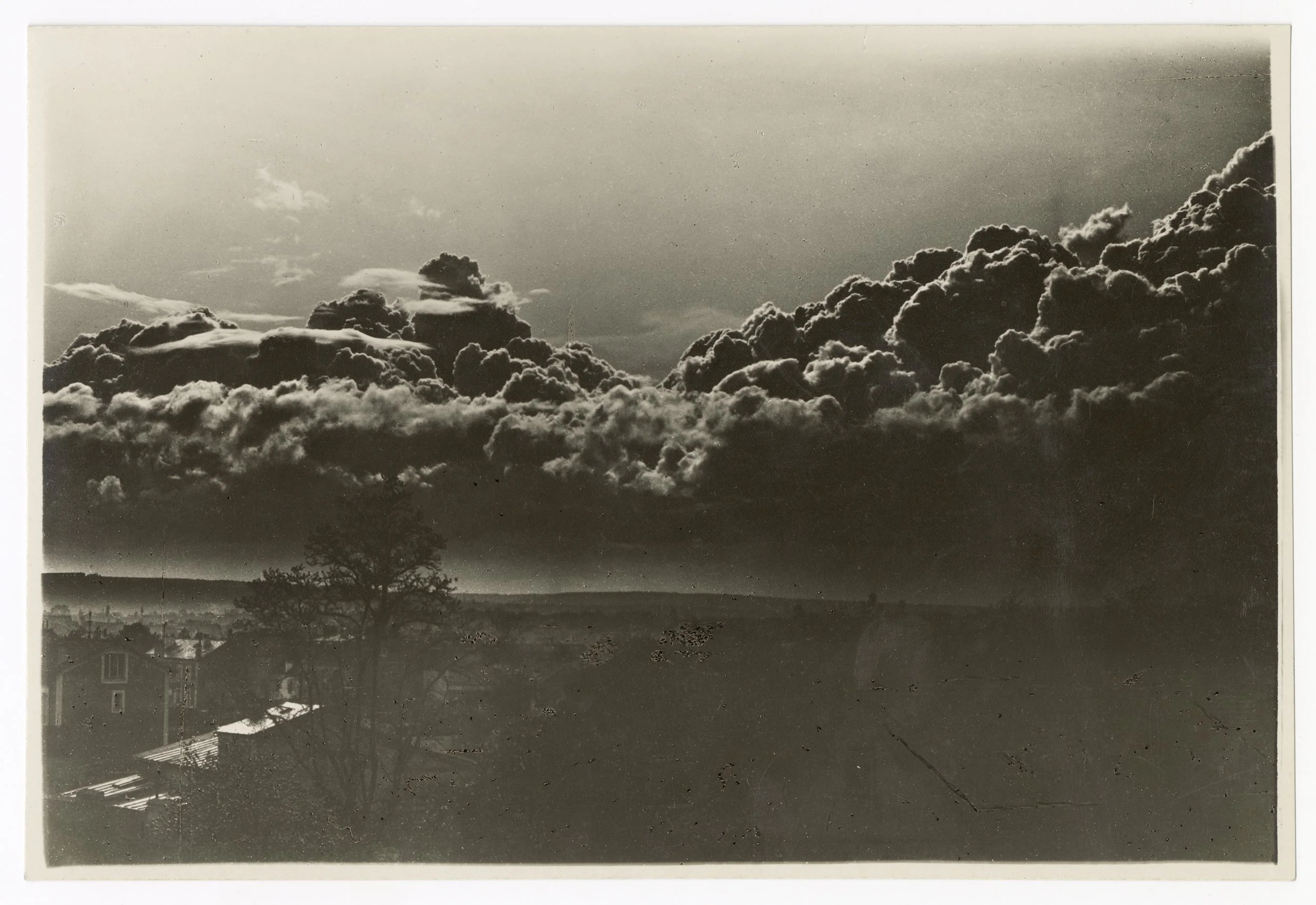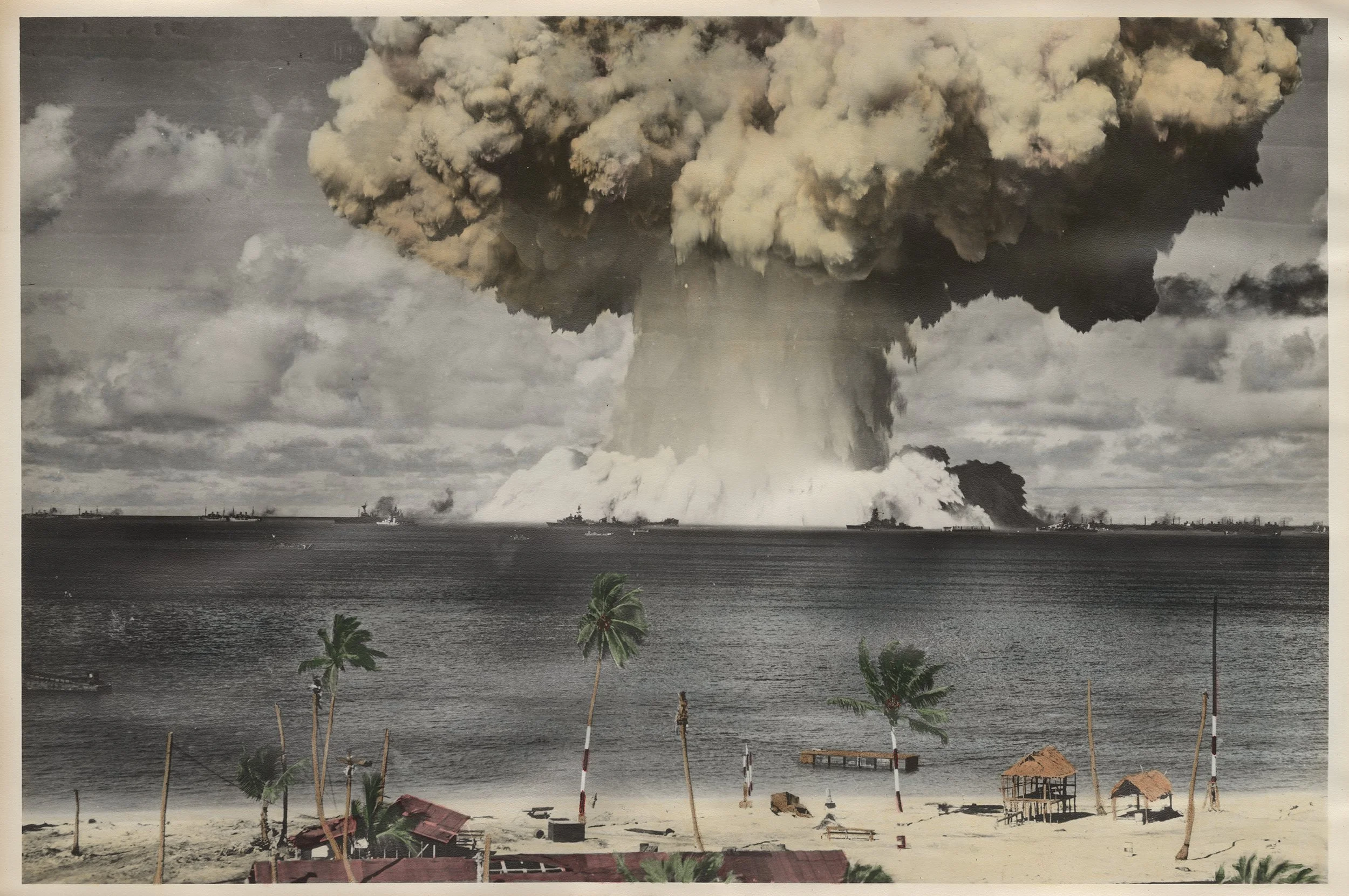Cloud Album captures the beauty and diversity of the skies through photography
Books, albums, and pre-photographic cloud studies also make up the ambitious new exhibition at the Polygon Gallery
Ferdinand Quénisset, Cumulo-Nimbus, Juvisy, France, 1903. Gelatin silver print. Courtesy of the Archive of Modern Conflict
The Polygon Gallery presents Cloud Album from March 11 to May 1 as part of the 2022 Capture Photography Festival
FLUFFY, ANGRY, pillowy, threatening, wispy, feathery, grey: clouds have fascinated human beings since the beginning of time. For Luce Lebart, the visible masses of water and ice particles are not only objects for gazing at; they are also a way to explore the history of photography and of the sky itself.
Lebart, a French correspondent for Archive of Modern Conflict, is co-curator with Timothy Prus of Cloud Album. Coming to the Polygon Gallery, the exhibition features 250 works, including 200 photographs and 50 albums and books, illustrating the beauty and breadth of images of clouds and the ways scientists, amateur and professional photographers, and artists have captured cloudy skyscapes.
Luce Lebart. Photo by Delphine Schacher
“The subject is fascinating whether you’re three years old or older—there’s no age for appreciating clouds,” Lebart tells Stir via Zoom from her home base in Paris. “The forms are extraordinary, and I think their encounter with photography has been intense because photographs have a lot to do with collecting clouds in a way. In science, you have plants on shelves, but with clouds it has been impossible to catch them. Photography in a way has allowed us to make a collection of clouds.”
Ranging from the first cloud nomenclature proposed by British chemist and amateur meteorologist Luke Howard in 1803 to snapshots of cataclysmic mushroom clouds from atomic bomb tests to a striking image of a ferocious storm system taken from Apollo 9 in 1969, Cloud Album takes its name from a scientific album initiated by Belgian meteorologist Jean Vincent. During his lifetime (1851–1932), he spent more than 20 years studying cloud nomenclature and became the inaugural director of the Institut Royal Météorologique in Brussels. The album took on a life of its own, with professional and hobby photographers contributing to it; this very piece is also part of the exhibition.
Lebart says the ambitious project came about through conversations with Archive of Modern Conflict and Reid Shier, director of the Polygon Gallery, during which they discovered their shared passion for all things cumulus, stratus, and cirrus. From there, the curatorial process moved in all sorts of directions, the research involving meteorologists, collectors, artists, pilots, astronomers, weather forecasters, and photographers. “It was kind of an adventure in a way, to meet and discuss clouds with so many different people,” says Lebart, former director of the Canadian Photography Institute of the National Gallery of Canada and former director of collections for the Société française de photographie in Paris. The exhibition is based on the Archive of Modern Conflict Collection, an organization founded in 1991 and dedicated to the collection and preservation of vernacular photographs, objects, artefacts, curiosities, and ephemera.
The photos in the exhibition were taken all over the world, including Russia, China, France, Italy, and Canada. There’s a vast range of materials and processes in the show, from salt-paper to albumen prints, and including manipulated, fisheye, and panoramic photos. Some photos were taken from above, including those captured in a balloon during World War I by Edward Jean Steichen. The curators’ goal of incorporating as much diversity as possible of the types of work shown led to just as much variation in the kinds of clouds depicted, from dust clouds and pollution clouds to explosion clouds and artificial clouds, all of which can be found in the International Cloud Atlas.
Department of Defense, USA, Atom Bomb Test, 1946. Colour tinted gelatin silver print. Courtesy of the Archive of Modern Conflict
One aspect of the show that Lebart finds especially intriguing was that at the very beginning of photography, it was extremely difficult if not impossible to photograph clouds given the lack of sophistication in available equipment at the time. Photographers innovated and found their own solutions to depict the sky.
“In many early photographs, it was very challenging for most photographers,” Lebart says. “There were no clouds in most photos.
“The first photographers were often painters, or trained as painters,” she says. “They would paint clouds at the back of their paper or glass negatives. Later, they could use cotton to simulate the clouds. Also the prefered method was to make photomontage. Two negatives were used to create a landscape: one for the sky and one for the ground. Also, filters became commonly used.”
The birth and early evolution of photography allowed the variations in clouds to be documented, with the art form contributing to the phenomenas’ international nomenclature.
“Another thing I find beautiful is the link to abstraction,” she says. “Most of the works in the show have not been made with an artistic intention but still have very strong aesthetic qualities. I’m fascinated by this.”
John Constable, Sept. 6 1822 Noon. Gentle wind at west hot & fine, England, oil on paper.
Included in the show are notebooks on clouds by early pioneers of meteorology, books by devoted cloud observers throughout time, and pre-photographic cloud studies by British landscape painter John Constable. “Between 1821 and 1822, John Constable produced spectacular vibrant oil sketches of the sky and its changing cloudscapes painted directly outdoors,” Lebart says. “Some of the first studies include buildings and trees. In 1822, they progressively became pure skyscapes in which the clouds are the singular focus. Most of these timeless and captivating images include notes of the date, time, and detailed descriptions of the weather, the wind and its direction, the characteristics of clouds, and the light or humidity. Constable’s understanding of the sky and the weather was profound.”
Constable’s interest in accurately depicting the sky corresponds with the birth of meteorology as a modern science, Lebart notes. And although Constable hardly considered his studies of clouds suitable for exhibitions, by the 1930s his work was considered brilliant and had an impact far beyond visual art.
“The wording ‘pre-photographic’ is now associated with his cloud studies. They now belong to the imagination of photography and its invention,” Lebart says. Historian Peter Galassi once described Constable’s work as “an art devoted to the singular and contingent rather than the universal and stable. It is also the syntax of photography.”
Cloud Album also touches on the way clouds are connected to phenomena such as thunder and lighting, frost, snow, and rain. “They are connected to everything,” Lebart says. “Without clouds, there will be no life on Earth. And of course clouds have no borders. We want people to feel this sense of wonder.”
For more information, see the Polygon.
















